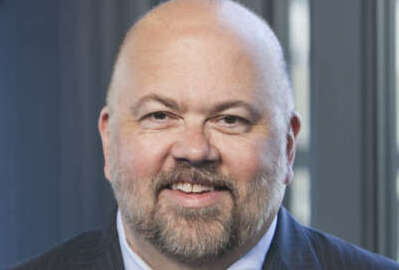This column was originally published on Jeff Neal’s blog, ChiefHRO.com, and was republished here with permission from the author.
It’s hard to avoid seeing articles and hearing people talk about the aging workforce. It is not just the federal workforce that is aging — the entire US workforce is getting older. The Bureau of Labor Statistics reports that the median age of the labor force increased from 38.3 in 1996 to 42.0 in 2016, and is projected to continue to increase slightly. The federal workforce is a bit older, with the median age of nonseasonal full-time permanent employees coming in at 48.4 in 2016. The federal workforce has been hovering in the 48 range for a while. It is safe to conclude that the median age of the federal workforce would be a bit younger if the numbers reflected part-time and seasonal employment rather than full time nonseasonal.
Why did I start a post about career changes with data on the median age of the labor force? It’s because many people think they are too old to make career changes. Those folks believe their choice is to do what they are doing now or to retire now or as soon as they are eligible. That belief can lead to a feeling of being trapped. There are some situations where circumstances really do appear to trap a person, but there are also many situations that offer more options than you might think.
Let’s start with the times when someone may find that hanging on is the best decision. For employees covered by the civil service retirement system who are not eligible to retire (yes, there are some of those left), leaving government is probably not a good option until they hit age 55. Folks covered by the federal employees retirement system who are close to their minimum retirement age (MRA) may also find that staying around is a good idea. They are typically eligible for a deferred annuity if they leave before their MRA, but they may not want to wait until age 62 to start collecting their retirement.
That leaves a lot of people who could make a career change, particularly people in their 30s and 40s. When people at those ages say they are “too old” to make a career change, I have to disagree. Most of us are familiar with the story of Henry Ford, founder of the Ford Motor Company. What we generally remember is that Mr. Ford revolutionized auto production and brought affordable transportation to the masses. What we do not usually remember is that he started the Ford Motor Company when he was 40 years old.
As the average life expectancy rose in the U.S., the retirement age also rose. People are working longer now, so someone in his/her 30s or 40s may easily have another 30 years or more to work. For a great example of mid life career changes, look at retired military personnel. With retirement eligibility after 20 years, the U.S. has produced many 37 or 38 year old retirees. Those folks typically go on to work a long second career.
The federal government is one of the employers that has no trouble with hiring mid career people. When the Defense Logistics Agency created its first agencywide training program for entry level jobs, we asked the Commander of what was then the Defense Supply Center Columbus (now DLA Land and Maritime), to speak to the inaugural class of interns. He walked into the room, then turned and left. Expecting to find a room full of early 20-somethings, he thought he was in the wrong room. The average age of that class was 37. Although some in the agency’s leadership thought it was a problem that our class included so many mid career hires, I disagreed. Those mid career new hires could easily spend 20 years or more working for the government.
For federal workers, making a mid-life career change does not always mean leaving government. The ability to move from one agency to another provides a means of moving into a different occupation, geographic location, or an agency with a completely different mission. In many respects, it is like changing employers entirely. For those who feel trapped by their current circumstances, a change of agencies or line of work may be a big enough change to alleviate the stress. During my 33 year career I changed agencies six times. I found the experience to be eye-opening. Moving from the Department of Defense to a civilian agency was a radical shift in mission, culture and values. Moving from a field organization in North Florida to the National Capital Region was almost as big a change. When I was about 40 years old, I tried a completely different line of work. After 18 years in HR, I took over headquarters operations at DLA. Although I eventually went back to HR, the break from the same type of work and the ability to take on dramatically different challenges gave me a new perspective on my career and the work I did.
The bottom line is that career changes in mid career are not a problem and they can be great. Many people do it and find something that they enjoy doing. You may have to take a step down in pay, but the alternative may be spending the rest of your career doing something you do not like doing.
Jeff Neal is a senior vice president for ICF and founder of the blog, ChiefHRO.com. Before coming to ICF, Neal was the chief human capital officer at the Homeland Security Department and the chief human resources officer at the Defense Logistics Agency.
Copyright
© 2024 Federal News Network. All rights reserved. This website is not intended for users located within the European Economic Area.

